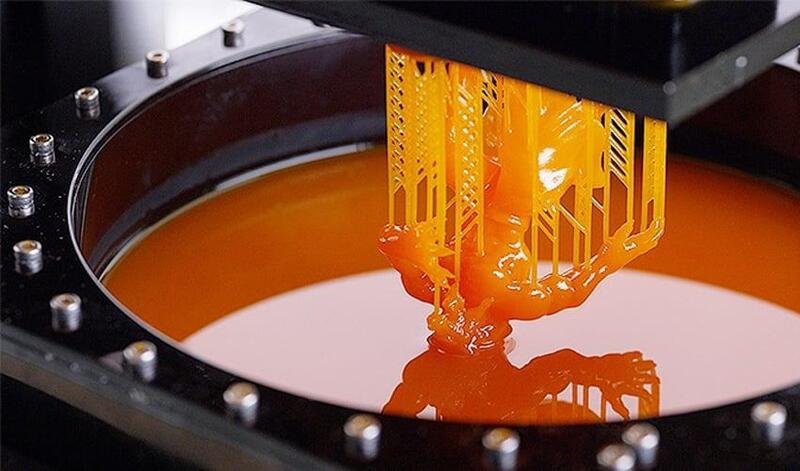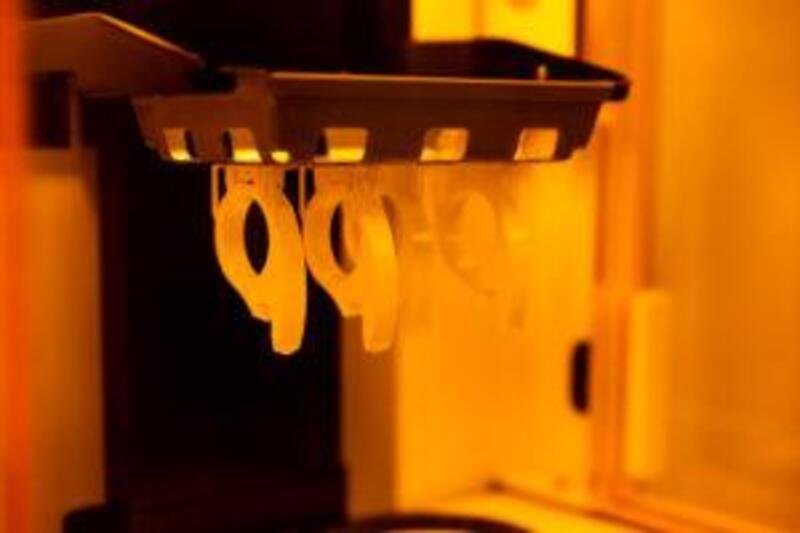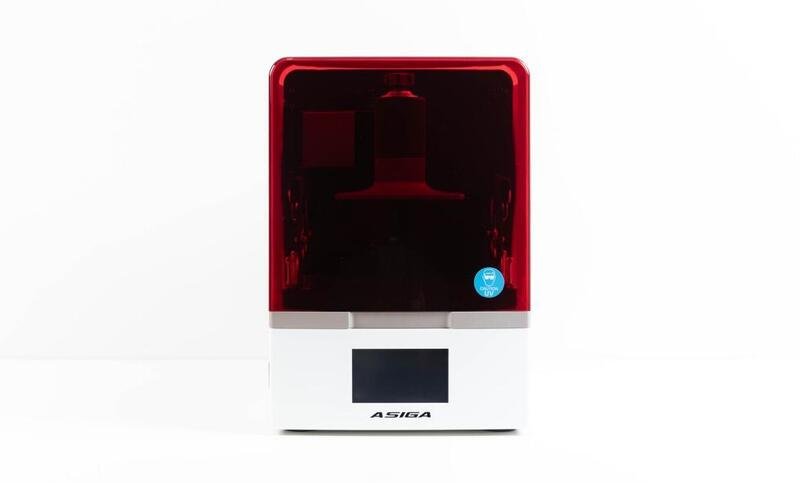Dental 3D printers are machines that produce dental parts, from crowns to aligners. They apply advanced additive manufacturing techniques to create 3D objects layer by layer from digital models. Using such materials as resins and ceramics, these printers enable dentists to produce custom solutions for individuals. They not only simplify dental practices but also improve patient outcomes. However, it is a headache to pick out the best from various dental 3D printers in the market. For dentists, labs, and technicians, investing in the best dental 3D printer can significantly improve productivity and patient outcomes. Despite varying price points, these investments offer substantial long-term benefits.
In this article, we will explore how 3D printing technology is applied in dentistry, what the best dental 3D printers are, and how you should choose from different dental 3D printers.

Part 1: Understanding Types of Dental 3D Printers
Before learning about dental 3D printers, you need to first understand the three 3D printing technology types. As the 3D printing technology becomes a game changer in many industries, three types of 3D printers are applied in dentistry. Specifically, they are stereolithography, digital light processing (DLP), and material jetting or PolyJet printers. Each has its own features and fits in different scenarios.
1. Stereolithography (SLA)
Stereolithography (SLA) is the most popular resin printing technology and one of the most accurate 3D printing forms. It uses a UV laser to create 3D objects by curing layers of liquid resin into solid form. SLA printers use various material types, including standard resins, high detail resins, castable resins, high temperature resins, etc.
Because SLA materials are brittle, they are usually used for prototypes that undertake light loading. But also because SLA printing is accurate, it is widely used to make dental 3D printers, especially those for dental restorations, dentures, surgical guides, orthodontic appliances, and models.

2. Digital Light Processing (DLP)
Digital Light Processing, also known as DLP, is another 3D printing technique used for dental 3D printers. Unlike SLA printers, DLP uses a projector to cure layers of photosensitive resin into 3D objects. This technology is suitable for printing dental parts as it can produce highly detailed and precise parts with smooth surfaces.
Compared to SLA, it works faster because it applies light to form the whole layer at once rather than line by line. Although DLP is also popular among dental 3D printer producers, one disadvantage with DLP is that the single projection source can distort the image and lead to uneven build quality. The dilemma between speed and quality still remains unsolved.

3. Material Jetting or PolyJet Technology
Material jetting (MJ), or PolyJet printing applies inkjet technology to produce 3D printed products, including dental prosthetics. This technique works similarly as traditional ink printers. It deposits liquid photopolymer layers onto a platform and then cures it with UV light to bond the layers together.
Despite the advance in 3D technology, not all dental 3D printers can meet all your criteria. There are always some unfulfilled needs, be it speed, accuracy, or quality. But do not worry, as we will introduce you to some of the best dental 3D printers in the next part.
Part 2: 6 Best Dental 3D Printers
Measuring against resolution, accuracy, precision, and speed, we offer you several best dental 3D printers. After a thorough comparison, six 3D printers pop out from the rest.
1. Aidite: CPD-100 DLP 3D Printer (Best for all labs and clinics)
The CPD-100 3D printer is one of the most accurate and stable 3D printers optimized for dental practice needs. More specifically, it is designed for oral repair and implant, especially repair cases with high precision of guide plate, veneer, single crown and connecting bridge.
- Equipment Size: 333*377*726mm
- Precision: 30μm
- Largest Printing Speed: 26mm/h
- Type of Printing Technology: DLP
- Data Format: STL
- Where to Buy: https://www.aiditedental.com/
- Who Can Use: dentists, dental technicians, dental labs

The CPD-100 has three outstanding advantages: precision, high speed, and stability. They make it one of the best dental 3D printers. Check out the features below:
- ±30μm Precision: It promises ±30μm molding accuracy, allowing you to replicate dental models precisely.
- High Speed: With its high speed, 8 and 1/4 guides can be printed in 25 minutes. In addition, the CPD-100 offers a large molding format for multiple cases to be printed all at once.
- 6-to-8-Year Stability: With accuracy and high speed in one package, it can also run stably for 6-8 years. Therefore, you don’t have to worry about it wearing out fast. You can trust the CPD-100 DLP 3D Printer with all your personalized needs.
2. Asiga: Max Dental 3D Printer ( (Best for beginners)
The Max 3D dental printer from Asiga is of high print quality and consistency and provides you with the following benefits, which make it a great 3D printer for dental models.
- Equipment Size: 410*500*480mm
- Pixel Resolution: 62μm
- Type of Printing Technology: DLP
- Data Formats: SLT, SLC, PLY, STM
- Where to Buy: https://www.asiga.com/
- Who Can Use: dentists, dental technicians
Major advantages of Asiga Max Series dental 3D printers:
- 62μm pixel resolution: The Max 3D printer for dental models has high pixel resolution, which allows it to print dental parts accurately.
- Convenient compact size: Easy to handle on the desk.
- Open material system: The Asiga Max dental 3D printer adopts an open material system and uses any suitable third-party material.
- Efficiency: Material changeover in under 30 seconds.

3. Nexa3D: Xip 3D Printer
The Nexa 3D Xip is a good choice for dental professionals in need of an affordable and user-friendly desktop dental 3D printer. It has fast print speed, an open material platform, and modular design for frequent use.
- Equipment Size: 420*350*530mm
- Pixel Resolution: 52μm
- Type of Printing Technology: LSPc
- Data Formats: .stl, .obj
- Where to Buy: https://nexa3d.com/
- Who Can Use: dentists, dental technicians
Check out its edges:
- High Speed: Print 10 dental models in 30 minutes.
- Large Volume: 4.8L build volume.
- Open Material Platform: It allows third-party resins.
- User-Friendly: Easy to operate and upgrade.
4. Zortrax: Inkspire 3D Dental Printer (Best for Professionals )
The Inkspire dental 3D printer of Zortrax is made for speed and surgical precision. It is known for consistent speed, results repeatability, and wide resins compatibility.
- Build Volume: 132*74*175mm
- Pixel Resolution: 50μm
- Type of Printing Technology: UV LCD
- Data Formats: .stl,.obj, .dxf, .3mf, .ply
- Where to Buy: https://nexa3d.com/
- Who Can Use: dentists, dental technicians
Advantages:
- High speed and precision with UV LCD technology
- Highest possible results repeatability
- Cost-efficient prototyping
- Fast resin 3D printing
5. Formlabs: Form 3B+
The Form 3B+ printer of Formlabs is also an advanced 3D dental printer for specialized healthcare needs. It can offer you accurate 3D prints, on-demand printing, and great material compatibility.

- Build Volume: 145*145*193mm
- Pixel Resolution: 25μm
- Type of Printing Technology: SLA
- Data Formats: .STL, OBJ, 3MF
- Where to Buy: https://formlabs.com/
- Who Can Use: dentists, dental technicians
It has the following pros:
- Compatible with SLA materials, including biocompatible, sterilizable materials
- Easily operable
- Smooth surface finish and high accuracy of 25μm XY resolution
6. SprintRay: Pro 55 S
The Pro 55 S dental 3D printer from SprintRay simplifies your dental practices for its versatility, intelligence, and accuracy.
- Build Volume: 105*590*200mm
- Pixel Resolution: 55 microns
- Type of Printing Technology: DLP
- Print Speed: up to 2 in./hour
- Where to Buy:https://sprintray.com/
- Who Can Use: dentists, dental technicians
Its benefits include:
- Customize your printing experiences
- Automatic resin and tank tracking
- Simple to learn and tech due to its user-friendly design
The 6 printers above are picked out for their precision, speed, user-friendly operation, compatibility with varied materials, and other features. As each one meets different needs, it is best to learn about some common standards and criteria when considering the best dental 3D printer.
Part 3: How to Choose the Best Dental 3D Printers?
Before purchasing dental 3D printers, you need to consider the following factors carefully, such as the printer type, your budget, print speed, materials compatibility. Use them as the criteria for picking out the dental 3D printers that can best serve your dental practices.
First, you need to select the appropriate printer type and technology. For dental purposes, you can consider 3D printers with the abovementioned technology, including SLA, DLP, and material jetting/PolyJet.
Your budget is another important factor that decides your printer purchase. If you already invest much in the initial stage, it is suggested that you look for more cost-effective choices.
In addition, you need to check the print speed, material requirements, and build volume of different dental 3D printers. It is advisable to choose a type that balances these aspects well. A good example is the CPD-100 DLP 3D printer of Aidite, which supports high speed printing and comprehensive material types.

Conclusion
Choosing the right dental 3D printer involves understanding available types and comparing their pros and cons. Consider resolution, speed, material compatibility, and other factors to invest in technology that enhances efficiency and improves patient outcomes. This easy guide provides you with 6 most recommended dental 3D printers. Take the time to explore your options thoroughly and choose a printer that aligns with your specific needs for dental practices.
FAQs
- Can you make your own dentures with a 3D printer?
Yes, you can create your own dentures with a suitable dental 3D printer. 3D Printers not only lower the production costs but also improve the precision. Choose the right printer and make that happen.
- How much does medical 3D printing cost?
The cost of medical 3D printing depends on such factors as the model’s complexity, material, and accuracy. It can vary from as little as $50 to more than $5,000. Usually, the more complex printer using expensive materials will cost more than the others.
- What are the main applications of dental 3D printers?
Dental 3D printers are primarily used for creating crowns, bridges, dentures, surgical guides, orthodontic appliances, and models. They enable dentists to produce custom-fit solutions that enhance patient comfort and treatment outcomes.
- How often do dental 3D printers need maintenance?
Regular maintenance is crucial for the longevity and performance of dental 3D printers. Most manufacturers recommend daily cleaning of the printing area, weekly checks of the resin tank and filters, and monthly inspections of all components. Following these guidelines ensures optimal printing results and minimizes downtime.
- What software is needed for dental 3D printing?
Dental 3D printing typically requires specialized software for designing and preparing digital models. Popular options include Exocad, 3Shape, and DentalCad. These programs allow dentists and technicians to create precise digital models that can be directly sent to the 3D printer for production.



